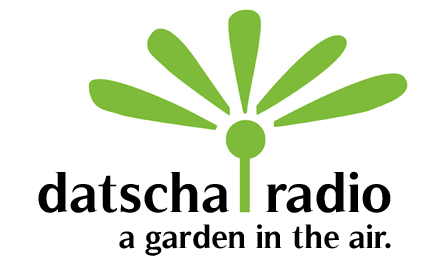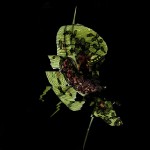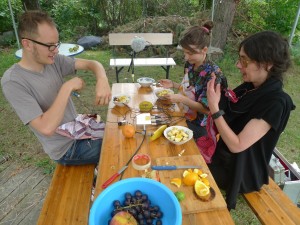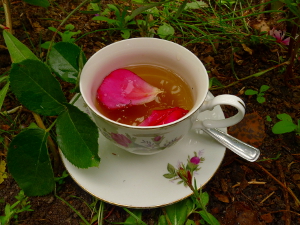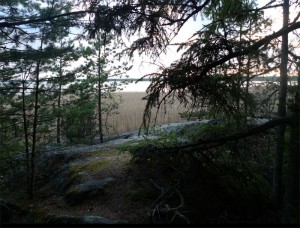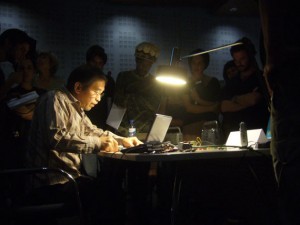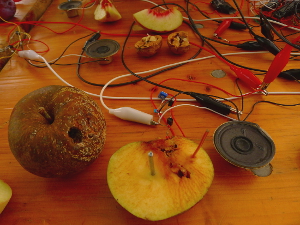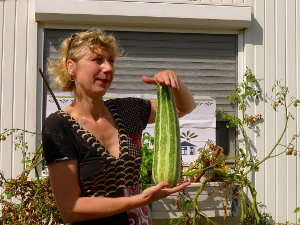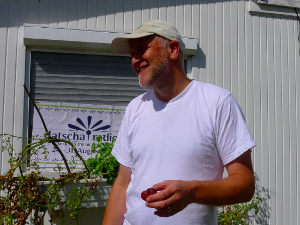Das Morgenfeld | The Morning Field
translation follows!Das Morgenfeld wird von 9-10 h gesendet und speist sich wie die Nachschleife – mit wenigen Ausnahmen – aus den Einsendungen des OpenCalls. Ausgewählt sind längere Stücke, Feldaufnahmen oder auch zusammenhängende Features, sowie Stücke, die uns erst nach dem 18. August erreicht haben.
Morgenfeld I
L’occio di Moiré von Gea Brown. 29:17 min
“This audio work is the soundtrack realized for “L’occhio di moiré”, a videoart work by Jacopo Racklik, where the video camera’s eye becomes such a third eye of our mind which goes deep into a tangled brushwood and records an endless proliferation of images.”
Zepelim Plant Conciousness and Communication von Carlo Patrao. 30:45 min
“We’ve all heard about the experiments documenting how plant growth is affected by different genres of music. What we know less about are the experiments conducted all over the world that suggest that plants have a form of communication and almost pyschic perception of human intention and the events that occur in their immediate environment. This sound collage is composed of music made by codification of plant DNA, talking to plants, bioelectronic sensorial music, field recordings with contact mics, solar powered music, plant comunication and music inspired by plants.”
Morgenfeld II
Die Gärten der Riesen | The Giant’s Gardens
Ein morgendlicher Klangspaziergang durch (un)sichtbare Gärten | A morning soundwalk through (in)visible gardens.
Ausgegraben von Alba, dem inversen Kanin aus miss.gunsts Time Bending Clock Gartenradio-Archiv | Digged by Alba Inversa the inverse rabbit from miss.gunst’s Time Bending Clock Garden Radio Archive
Morgenfeld II Special: Der Gesang der Endivien
Foto: Alice Calm
One Hour with Compositions by Alice Calm. Nature, electronica, poems.
Alice Calm fait ses études musicales au Conservatoire de Toulouse et suit parallèlement des cours à la faculté de Toulouse le Mirail où elle obtient une Maîtrise de Musicologie en 1990. Depuis 2000, elle est professeur de piano au Conservatoire de la ville de Meyzieu.
Elle a repris des études dans le domaine de la composition à l’Université Lyon 2 où elle obtient un Master Pro de Musiques appliquée aux arts visuels en 2008 et obtient un Diplôme d’Etudes Musicales dans la classe de musique électroacoustique de Bernard Fort à L’Ecole Nationale de Musique de Villeurbanne en décembre 2010.
Elle affectionne particulièrement les interactions entre les différentes pratiques artistiques : musique, théâtre, danse, peinture, vidéo… et réalise des pièces aux destinations diverses. (http://www.alicecalm.com)
Playlist: Playlist_Alice Calm
Morgenfeld III
Dakar Morning Birds. Dinah Bird and Jean Philippe Renoult. 32:43 min
“In March 2010 we were invited on an artistic residency in the Senegalese capital Dakar. In the closed garden of the villa where we were staying each morning at around 5am one particular bird call woke us up, with its distinctive repetitive cry, and so we began to wait for it. We lay awake listening as the city woke up around us. In this recording you can hear the layers of natural and manmade noise gradually building up, punctuating the roar and hum of the commuter traffic and the planes overhead, with other birdsong, and the sound of the muezzin calling to prayer somewhere in the distance.
This is not supposed to be a sonic tagging of the local flora and fauna, more a progressive discovery of a corner of the polluted capital heard behind the closed walls of a city garden.”
Canopy Beat. Els Vienae. 27:53 min
Field recordings recorded in primary forest in Amazonia.
Els Viaene (°1979, Belgium) started her work as a sound artist / field recordist in 2001. With a set-up of two small microphones she listens, zooms into and enlarges the aural landscapes surrounding us. The natural rhythms and textures of the sounds hidden in those landscapes form the basis of her work.
Morgenfeld IV
Apiculteur. Samuel Mittelman. 1:06:04 std.
« Ce sujet rend compte de la relation à mon père, apiculteur dans les Corbières et son milieu profes- sionnel, ceci durant le temps d’une saison apicole. Aux ruches, mon père me parle d’une manière parti- culière, celle d’un père à un fils, avec de la douceur et un désir de communiquer sa passion et ses pro- blèmes, auquel je réponds par cette création radiophonique. »
Morgenfeld V (Classical)
Dieses Morgenfeld ist – sehr frei – in Richtung “klassischer Musik” interpretiert worden. Neben Stücken von Bach, Wolfgang Rihm, Terry Riley, Steve Reich und Iiro Rantala, sind folgende OpenCall-Tracks enthalten:
Bruchstücke 4, Suleika page 1 und Sukeika page 2 von William Engelen
“Alle Kompositionen sind enstanden in 2003, anlässlich meiner Ausstellung im Aachener Kunstverein. Ich habe für den Aachener Stadtgarten 5 Kompositionen geschrieben, die dort an einem Abend live zu hören waren. Die Zuhörer konnten durch dem Park spazieren gehen und an 5 Orte anhalten um die Kompositionen zu hören. Anschliessend wurden sie im Kunstverein ausgestellt.”
My Parent’s Garten. Attila Fias & John Kameel Farah. 7:52 min.
“I started off composing “My Parents’ Garden” by trying to capture memories of a dreamlike garden from childhood – I remember that my father’s tomato plants in the backyard were taller than me, and the zucchini plants looked like big octopuses. So in this piece, lush and graceful motifs reflect onto each other between the two pianos.
But while writing, the Gulf of Mexico oil spill occurred, and Attila was composing a piece called “Warning” that dwelt on this tragedy, so it progresses from a backyard garden to the grandeur of the sea and mountains, some of that dark undertone seeped over into the sounds of this piece as well.”
In the Forest von Mark Matthes. 4:49 min.
Geb. 1976 in Hamburg; lebt und arbeitet in Leipzig. 1982 – 2002 Schüler bei Arthur Cardell, Mike Rutledge & div. Jugendorchester seit 1995 Bands & Projekte seit 2004 Kammerorchester Mark Matthes.
Live Oak Sable Palm und Northern Red Oak Leaves. Michael Gatonska. 5:17 min.
Gatonska on the Red Oak: “This is the first in a series of soundscapes that I captured of a Northern Red Oak tree. Recorded in very early spring, the dry dead leaves of the red oak still remain affixed to their branches. In winds of varying speeds, the leaves create a rhythmic and musical rustling that increases and decreases in sound-activity-intensity and dynamic levels as the leaves react to wind/meteorological conditions. I hear this soundcape as a single and distinguishable sound, even though the partials are nonharmonic; a percussive effect with no clear pitch, but clearly identifiable and characteristic of the red oak during this time of year in New England.”
Vollständige Playlist: Morgenfeld5
Morgenfeld VI
(wird ergänzt)
Morgenfeld VII
Das siebente Morgenfeld bezieht vor allem die späteren Einsendungen von Anna Bromley, Sally Mc Intyre und Gregor Kielawski mit ein, sowie einen Ausschnitt aus Michael Peters “Crickets” (Archiv gruenrekorder).
Dandenongs3 10:28 RadioCegeste/Sally Ann Mcintyre
gesang 1:58 Grzegorz Kielawski
now_fragment 15:35 Sandra Cuesta
1_7_(datum) 2:32 Grzegorz Kielawski
alte hasen 7:00 Bromley / Fesca
27_7_(datum) 6:46 Grzegorz Kielawski
sonic neighbours 7:00 Bromley / Fesca
Crickets_excerpt 9:27 Michael Peters
8_16_(datum) 3:01 Grzegorz Kielawski
Infos:
Now (Fragment). Sandra Cuesta. 15:35
“Looking the garden from another side and leaving us in time, we can lose ourselves in the current. If the world is in a garden, we are already out there. The song said : “the color you said is black, the color that supposedly lacked. Sitting in the line of the sun, sitting in the sun, watching the garden from the other side, now it’s working in your blood.”
“My work here is related to time, a continuous time, which is drawn on a line ,as in the path of a tie in a knot on another node, which returns on itself to return to the path traveled and from there take a new impulse, in another direction, making visible that over time the permanent is change.”
Alte Hasen und Sonic Neighbours von Anna Bromley und Michael Fesca. Je 7:00 min.
Zu: “Alte Hasen” (Parzellengenosse): “Eine auditive Komödie mit Gartennachbarn des Kleingartenvereins “Am Turnplatz” in Wildau. 7 min”
Über Grzegorz Kielawski (“Musikproben”):
Grzegorz Kielawski, geb. 1981 in Wałbrzych, seit 2005 in Wien; freier Mitarbeiter der Kunst- und Literaturzeitschrift Zeitzoo, GAV-Mitglied, Übersetzer, Autor und Fotograf. Zuletzt erschienen: So wie du kann jeder aussehen. Erzählungen und Fotografien (edition exil), Glücksausmaß in Ton. In: Glück und Schwein (Das fröhliche Wohnzimmer), Küss mich, ich bin ein Pole. In: Mein Leben mit 20 (Das fröhliche Wohnzimmer).
Read More
